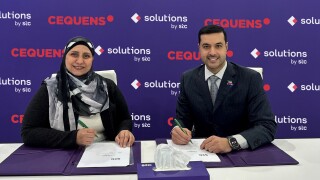
Further spurred by the advent of 5G, the age of IoT is truly upon us. Patrick Sullivan, AVP for international sales at Verizon Partner Solutions, talks about how the market is taking shape and about the platforms that are developing to support this increasingly vast ecosystem.
What recent trends have you seen in the global IoT market?
Over the last few years, there’s been tremendous growth in the IoT market. Likewise, from the perspective of Verizon and Verizon Partner Solutions [VPS], the uptake of IoT connections is really starting to play out more and more.
We’re seeing our partners using the Verizon network and IoT solutions for supporting their own end customers over a broad range of machine-to-machine use cases. These extend from utilities, monitoring and diagnostics all the way to the automotive sector, which is an area where we see a lot of activity at the moment.
How is 5G helping to boost the prospects for IoT?
Today, our VPS customers commonly leverage our 4G LTE network for IoT. However, the advent of 5G will dramatically accelerate the advancement of use cases, from autonomous driving features in cars to commercial aerial drones. It’s also going to help make use cases like telemedicine and smart grids more mature.
We’re really just scratching the surface in terms of the possibilities here, especially when you think of mobile edge computing and the opportunities that’s going to create as well; it’s an exciting time to ideate on the art of the possible.
What are the main current focuses for VPS in the IoT market and how is the company helping to ease the journey for customers?
First and foremost, it’s about making sure we understand the requirements of our partners’ end customers and what challenges they’re seeing. Much of this is around ease of use and being supported in a secure environment.
One thing we offer is ThingSpace, an intuitive web-based tool that gives customers a platform with all the tools for prototyping, testing connections and managing their devices on Verizon’s wireless network. In addition, it provides reporting capabilities that give partners actionable intelligence they can use to develop and drive solutions for their end customers and address different requirements.
How are you seeking to meet security needs for IoT?
We’re a recognised leader from an enterprise security perspective – and suffice to say, we’ve incorporated all those best practices into the IoT domain.
I’m most excited about the work we in the Verizon Business Group are undertaking on this front. As the industry looks to evolve towards GSMA IoT SAFE standards and leverage the SIM as the root of trust to enable end-to-end secure connectivity, we have collaborated with the SIM-manufacturer ecosystem to deploy capabilities like SIM Secure in the US market and are testing components that build on top of it.
These additional features will enable our customers to manage device authentication, attestation, credential management and data protection on a single stack. While many of these components will be natively enabled in the Verizon Wireless infrastructure, we are also excited about the potential of these over-the-top capabilities being enabled on other carrier networks and MVNOs.
This is very exciting from an international perspective and I think it’s going to be a real game-changer for IoT.
In what ways does IoT complement other parts of the business?
Healthcare’s interesting here, because it’s an area where you can start bringing together a host of different products that stand on their own, but can then also be bundled into new go-to-market solutions.
For instance, we offer Telehealth services on our videoconferencing and collaboration platform BlueJeans; there are then a plethora of connected IoT devices that sit within the health ecosystem and also have to be supported in a secure fashion.
Network security, BlueJeans and IoT are all strong offerings in their own right, and currently we tend to offer them separately. But increasingly, the dialogue we have with partners is around the business-transformation needs of their end customers and how we can help them bring a combined solution stack to address that.
And healthcare is just one example. Gaming is another that has potential, and when you think of others – whether automotive or manufacturing – there are lots of use cases where you can bring elements of different solutions together.
How do you see the long-term future of IoT?
At present, many of the use cases we support are the standard ones, whether it’s construction, smart metering, wearables or consumer devices. But when you start thinking of the capabilities that 5G offers, it really changes the landscape.
Things like connected vehicles really lend themselves to the capabilities of a 5G network and represent a big opportunity to support customers.
A lot of the requirements we see in IoT are around information and managing it to make it actionable and intelligent. But many of the things we look to do are about taking on the feedback of customers to make sure we consistently enhance the capabilities we offer.




